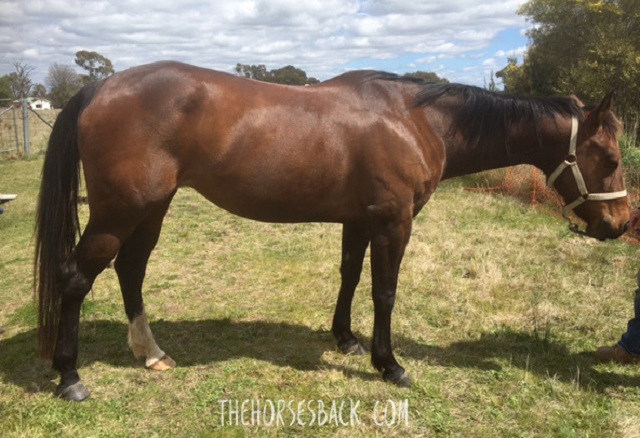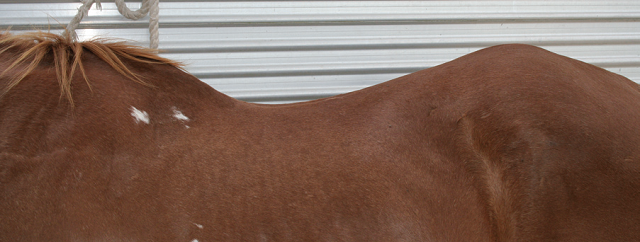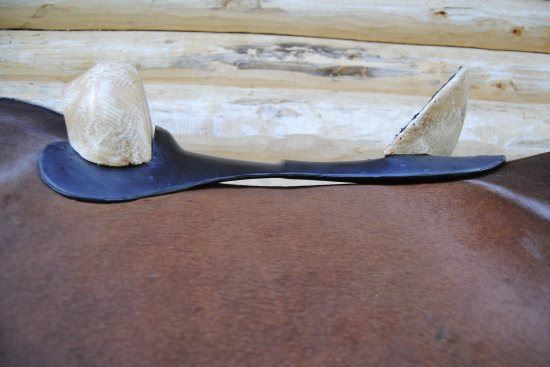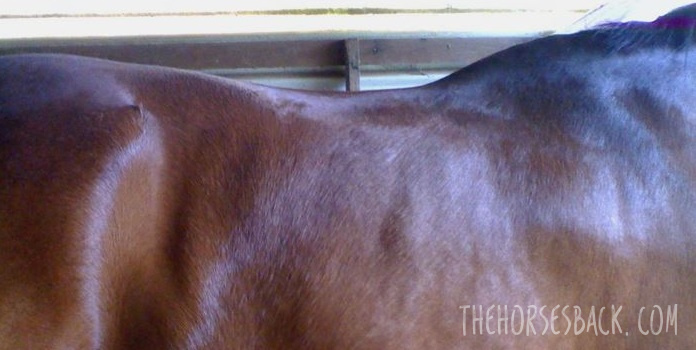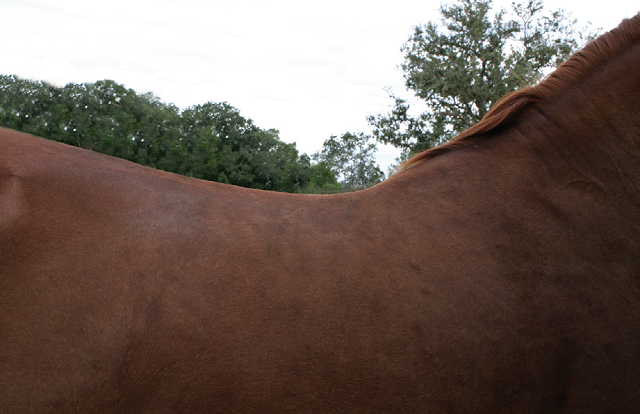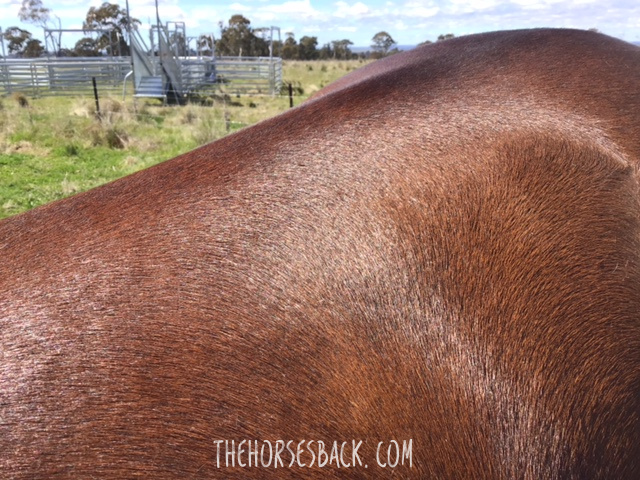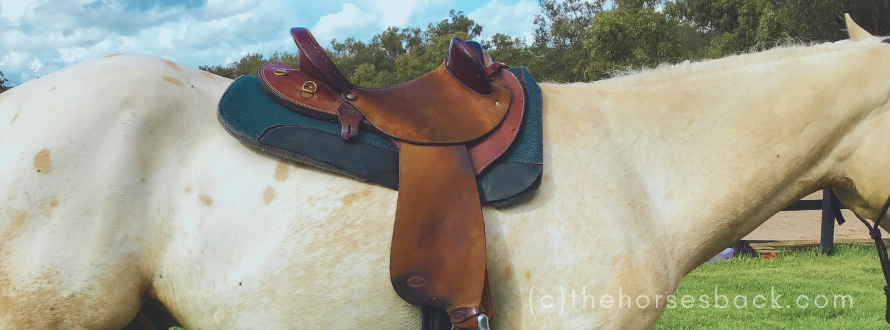
Although hugely popular, the Half Breed saddle is harder to fit to horses than its simple appearance seems to suggest.
As the love child of the Australian stock saddle and the Western saddle, its origins are on the station or farm, where riders spend long hours working cattle.
It offers the rider a lot of stability and security, while allowing freedom of movement when needed in stock work.
In Australia, it’s favoured in sports including campdrafting, team penning, or polocrosse. There are also many variations in endurance riding, while many leisure riders love this secure saddle.
However, its design does throw up some oft-seen fitting problems horse-side.
Caveat: If your saddle fits well, you’ve no reason to be concerned with what I describe here. If you’re not sure, then the following points are something to be aware of. It’s not an attack on this style of saddle or the sports that use it.
Why are Half Breed saddles so popular?
Note: This style is often called a Swinging Fender, which is becoming a catch-all name for a group of similar styles. Strictly speaking, the ‘Fender’ saddle has stuffed panels like the Aussie stock saddle – that’s not what we’re looking at here.
This style is favoured by many riders for a few reasons. I’ll hazard a few here:
- It feels safe and secure, thanks to the knee pads.
- You sit where it puts you, thanks to the knee pads.
- The seat is open and wide, therefore comfortable.
- It’s functional for working stock.
- It’s lighter than western saddles.
- It apppears to be easy to fit.
- It’s a good-looking saddle.
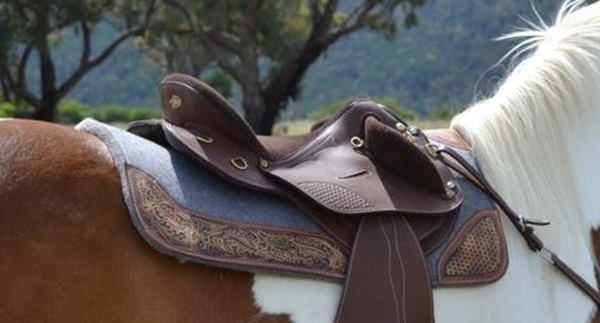
The sticking point is its apparent simplicity when it comes to fitting. There’s a prevailing belief that if it’s wide enough, it fits.
That’s simply not true. And nor does it become a better fit through the addition of a thicker pad.
What are the features of a Half Breed saddle?
The tree is closer to a Western tree, but with a more forward-angled swell (ie. pommel area). It also has fenders and skirts like the Western, with an unpadded underside (which is why it’s always used with a thick saddle pad).
Meanwhile, the raised knee pads that offer so much security hark back to the Aussie stock saddle. A critical difference is that in the Half Breed saddle, they’re angled forwards.

But what’s also important is this.
Like the Western saddle, the Half breed’s fit is harder to check underneath than English and Aussie stock saddles. It can often look fine from the outside, even when it’s not fitting the contours of the horse’s back at all.
Here are the varied ways and the reasons why Half Breed saddles can fail to fit. As you’ll see, they overlap and interlock to a surprising degree.
The forward sloping angles of the fork
As we’ve just seen, the swell of the Half Breed saddle (ie. pommel area) is angled forwards.
This provides a base for the knee pads, which suit a forward leg position for the rider.
The difficulty is that the bars frequently restrict the shoulder action, as the structure either extends forward above over the scapula cartilage or digs in behind it.
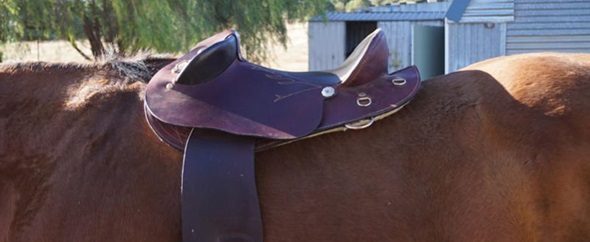
The Trapezius and Rhomboid muscles are affected, with horses often showing tension and muscle maldevelopment, along with ‘hollowing’ along the topline.
Even so, the shoulder action can still lift and tilt the saddle back, which then causes it to slide back. It’s quite common to see the saddles used with breastplates for extra stability.
On top of this, the fixed position of the knee pads can force a rider’s butt further back as they adopt a ‘chair seat’. This leads to or contributes to a number of problems – more on this below.
The width and angle of the Half Breed saddle tree
Half Breed saddle trees are often narrow in front and steeply angled.
These may suit lower weight, hard-working stock horses of Thoroughbred type, but can be disastrous for heavier horses, such as Australian Stock Horses with more Quarter Horse influence.
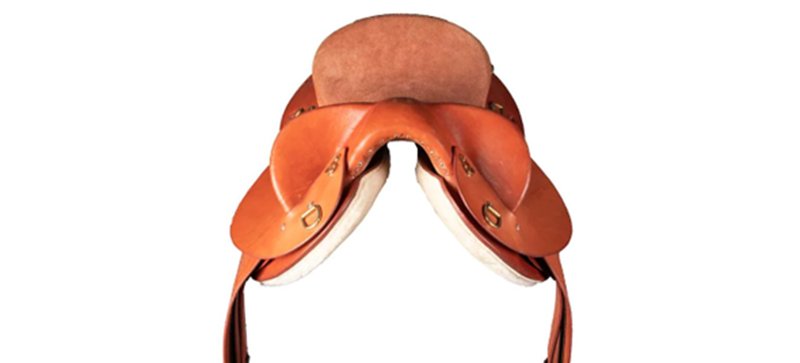
The shoulder action is often even more restricted by this narrowness. Once again, the saddle may be lifted in front and the saddle can tip back.
Alternatively, if the bars are pushing in behind the scapula, muscle atrophy can occur and then the saddle drops down in front. Thicker saddle pads may be added by a well meaning owner, but this doesn’t solve the problem – it compounds it.
The profile across the back of the tree
As mentioned, the back of the saddle gives the illusion that it’s simple to fit.
The plain skirt suggests that ‘what you see is what you get’ when compared with European saddles or Australian stock saddles.
However, there’s a solid tree in there, and the contour across the back of the tree needs to match that of the horse’s back.
When the tree is too wide and flat, there’s often too much contact adjacent to the spine, and little to no contact further out.
This creates a higher level of pressure in the narrow contact areas.
If the saddle is already being tipped back, we have potential for a lot of postural change throughout the lumber spine and lumbosacral region of the horse.
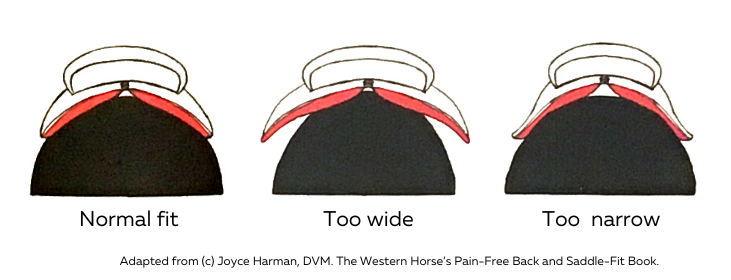
The bridging Half Breed saddle
Can it get worse? Yes. Compounding all of the above, the saddle may bridge due to its close fit over the scapula cartilage.
Bridging means there are areas of strong contact and high pressure at the front and back of the saddle, and little in the middle.
It can sit clear or almost clear (you don’t need to actually see daylight) above the spinal curve beneath the saddle.
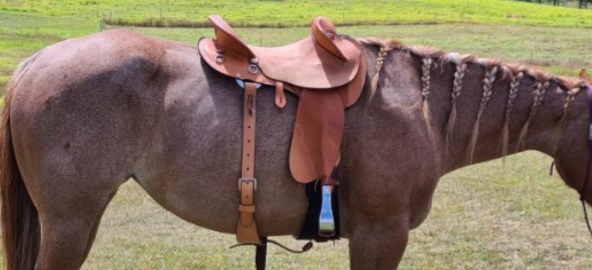
Add this to all of the above and things are getting pretty unpleasant for the horse. It’s certainly not unusual to see this, especially when bigger saddles are placed on horses that are croup-high, or downhill in conformation.
The seat balance of the Half Breed seat
Back to the angled swell and knee pads. These provide security for the rider, but leaves them little option but to sit further back.
This means they’re positioned some behind the centre of gravity ‘sweet point’, which is close behind the shoulders and withers.
The rider’s weight is levered to the back of the saddle, loading the back of the thoracic spine and possibly the more forward lumbar spine.
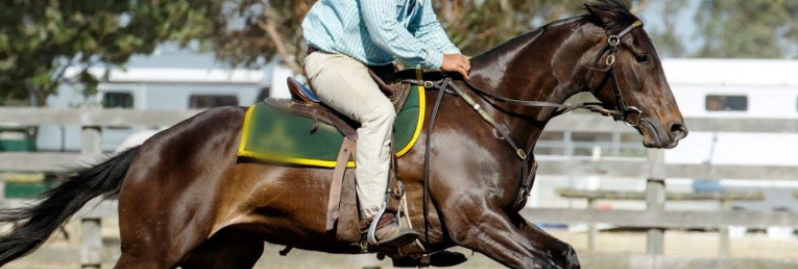
The horse’s tendency is to hollow or straighten the lumbar spine in an effort to manage the rider’s weight.
It’s common to see overdeveloped and hypertrophic lumbar muscles, along with an overstraight or raised lumbar spine.
This is not a criticism of a riding style. All saddles place the rider behind this sweet spot (as discussed in this earlier article), but the issue is how far behind. Some saddles are more angled than others.
Useful saddle fitting resources
This article introduces the problems, so what about solutions?
The following resources provide more information on getting your saddle fit right.
Western Saddle Fit – The Basics 67-minute video on DVD or Vimeo streaming from Rod and Denise Nikkel
Western Saddle Fit: Well Beyond the Basics 6 hours for equine professionals from Rod and Denise Nikkel
The Horse’s Pain-Free Back and Saddle-Fit Book eBook from Joyce Harman DVM
The Western Horse’s Pain-Free Back and Saddle-Fit Book Soundness and comfort with back analysis and correct use of saddles and pads, from Joyce Harman DVM



